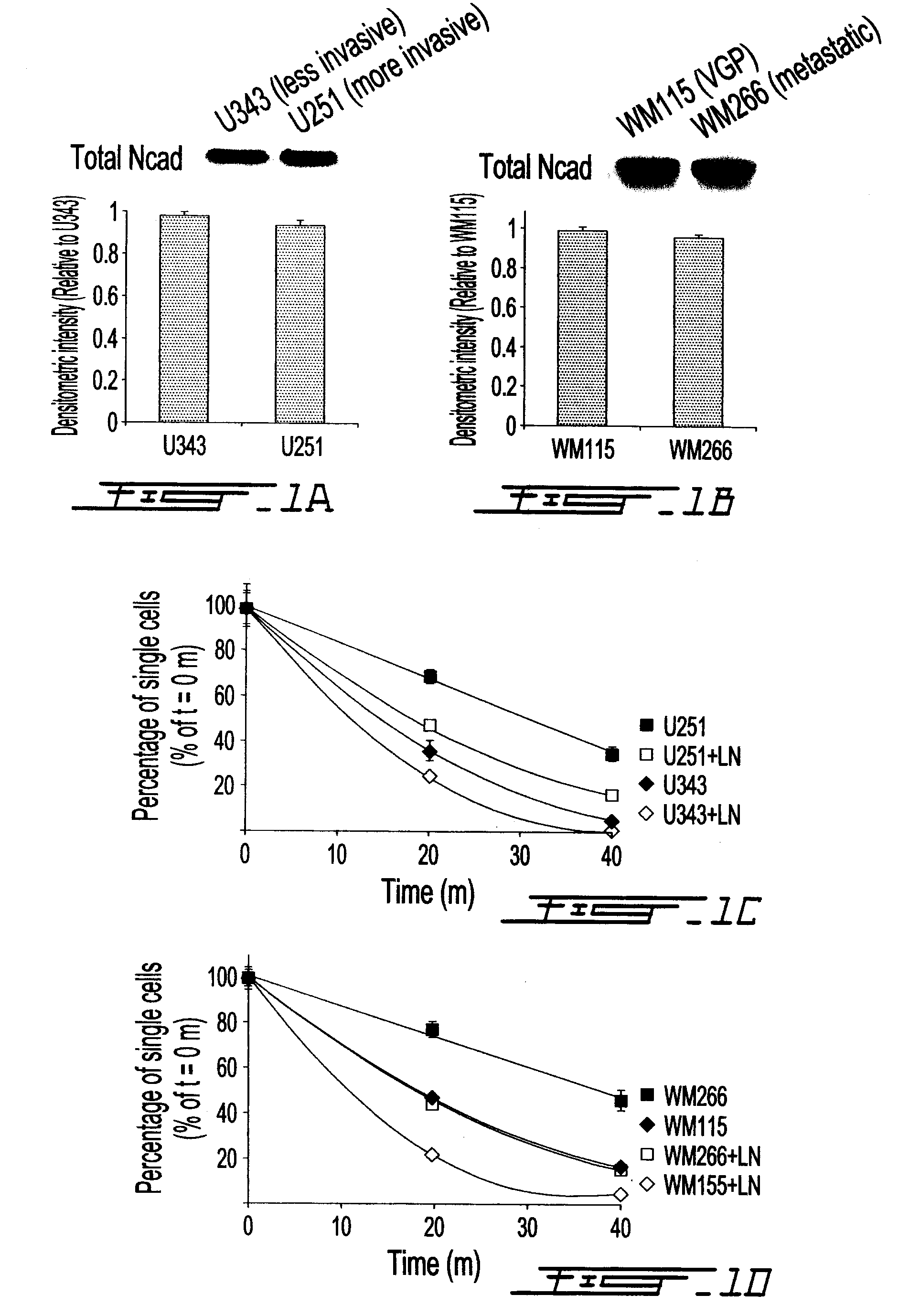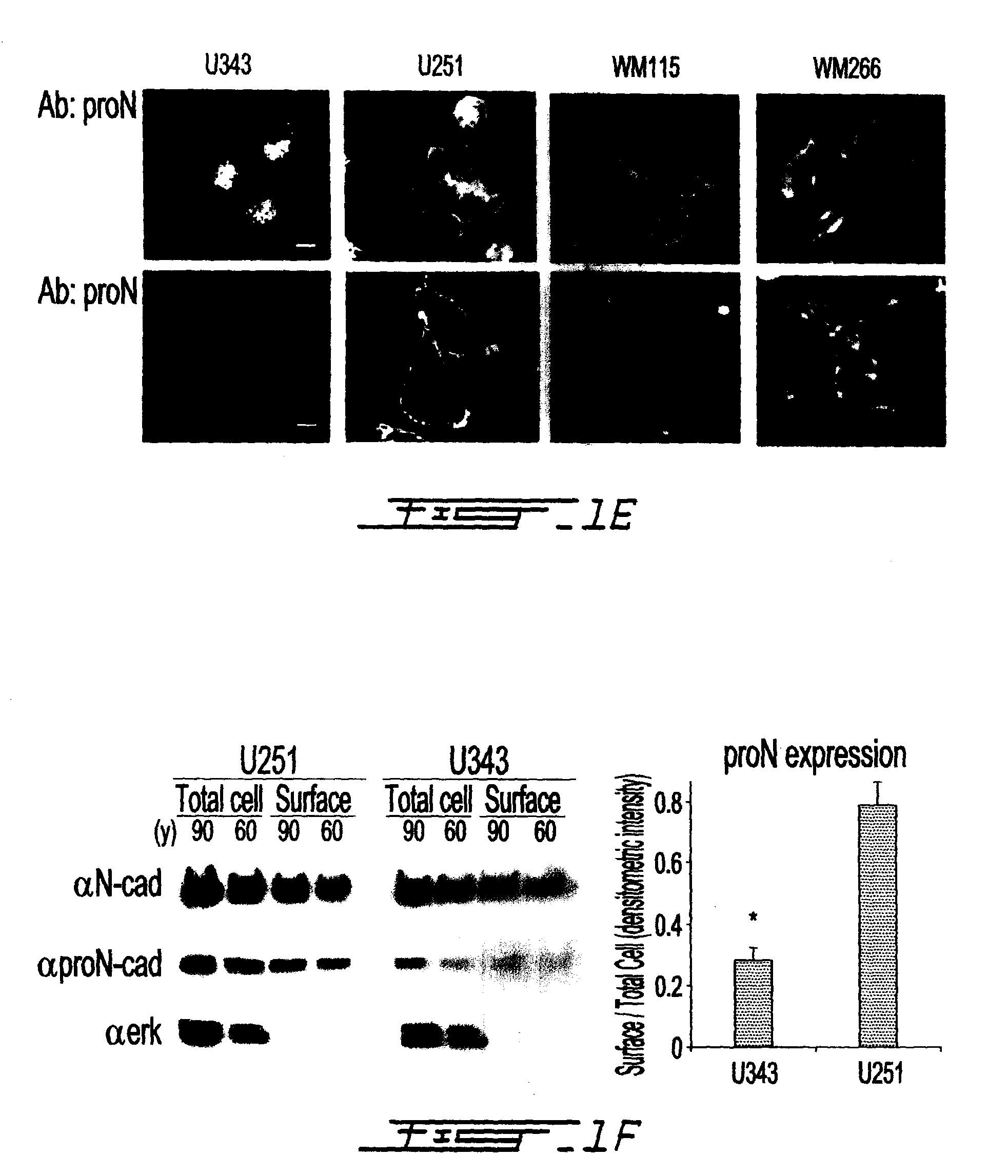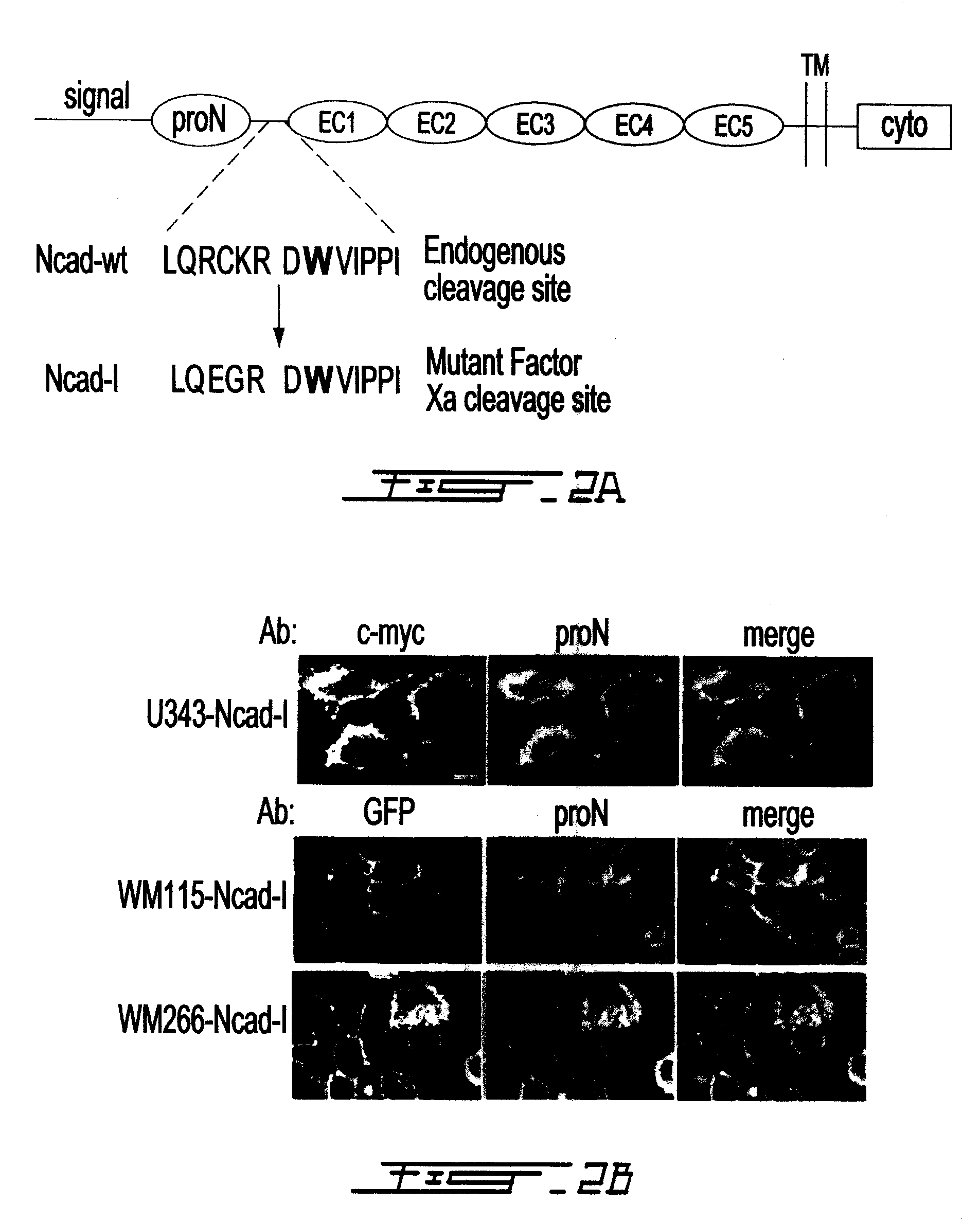Altered n-cadherin processing in tumor cells by furin and proprotein convertase 5a (PC5A)
- Summary
- Abstract
- Description
- Claims
- Application Information
AI Technical Summary
Benefits of technology
Problems solved by technology
Method used
Image
Examples
example 1
Human Glioma and Melanoma Cells Express Functionally Adhesive N-cadherin
[0079]We studied the functional state of surface expressed N-cadherin in primary malignant glioma cell lines, and in melanoma cell lines representing different stages of transformation. N-cadherin expression was comparable in U343 and U251 cell lines (FIG. 1A), which invade approximately 500 μm and 1400 μm, respectively, in a three-dimensional invasion assay 5 days post-implantation (FIG. 8), as well as in VGP (WM115) melanoma cells and a melanoma cell line established from a secondary site (FIG. 1B).
[0080]Since N-cadherin is an abundant component of melanoma and glioma cell lines, we wanted to examine its adhesive activity in these cells. We observed greater aggregation in less invasive U343 glioma cells and in VGP cells (WM115), compared to highly invasive U251 cells and metastatic melanoma cells (WM266), respectively (FIG. 1, C and D; FIG. 9A). There was no cell aggregation in the absence of calcium for all c...
example 2
[0083]Since N-cadherin expression has been shown to correlate with increased motility and proN lacks adhesive function, we hypothesized that loss of adhesion due to aberrant surface expression of proN may serve as a mechanism for enhanced motility in brain tumor cells, even in the presence of mature N-cadherin. In this way proN could influence for example glioma invasion and melanoma metastasis. We engineered an N-cadherin construct (called Ncad-1, which expresses a mutant precursor protein referred to as Ncad-1 or mutant proNCAD) where the endogenous consensus proprotein convertase cleavage site was replaced with a serum coagulation Factor Xa recognition site in the linker sequence (FIG. 2A), similar to previously reported constructs. Glioma and melanoma cells transfected with mutant Ncad-1-GFP or mutant Ncad-1-myc, respectively, were selected for and clonal populations were expanded. Myc and proN co-localized extensively at the plasma membrane of transfected glioma cells, and GFP ...
example 3
Furin and PC5 Proprotein Convertases are Differentially Expressed in Glioma Cells
[0086]Classical cadherins are synthesized as inactive propeptide precursors, which become functional mature proteins upon post-translational processing. The subtilisin-like proprotein convertases (PCs) are a family of Ca2+-dependent endoproteases, responsible for the activation of precursor proteins by cleavage at a consensus recognition site (Arg / Lys-(X)n-Lys / Arg-Arg, n=0, 2, 4 or 6) (Seidah and Chretien (1997) Curr opin Biotechnol;, 602-607). The common mammalian PCs described are furin, PC7, PACE4, PC5, PC1 / 3, PC2, and PC4. While PC1 and PC2 are important in the endocrine pathway, and PC4 only functions in germinal cells, furin, PC7, PACE4, and PC5 have a wide tissue distribution and proteolytically process precursors in the constitutive secretory pathway. It has been shown that furin can cleave pro-E-cadherin (Posthaus et al. (1998) FEBS Lett 438; 306-310), rendering the molecule functionally adhesi...
PUM
| Property | Measurement | Unit |
|---|---|---|
| Current | aaaaa | aaaaa |
| Adhesivity | aaaaa | aaaaa |
| Therapeutic | aaaaa | aaaaa |
Abstract
Description
Claims
Application Information
 Login to View More
Login to View More - R&D
- Intellectual Property
- Life Sciences
- Materials
- Tech Scout
- Unparalleled Data Quality
- Higher Quality Content
- 60% Fewer Hallucinations
Browse by: Latest US Patents, China's latest patents, Technical Efficacy Thesaurus, Application Domain, Technology Topic, Popular Technical Reports.
© 2025 PatSnap. All rights reserved.Legal|Privacy policy|Modern Slavery Act Transparency Statement|Sitemap|About US| Contact US: help@patsnap.com



